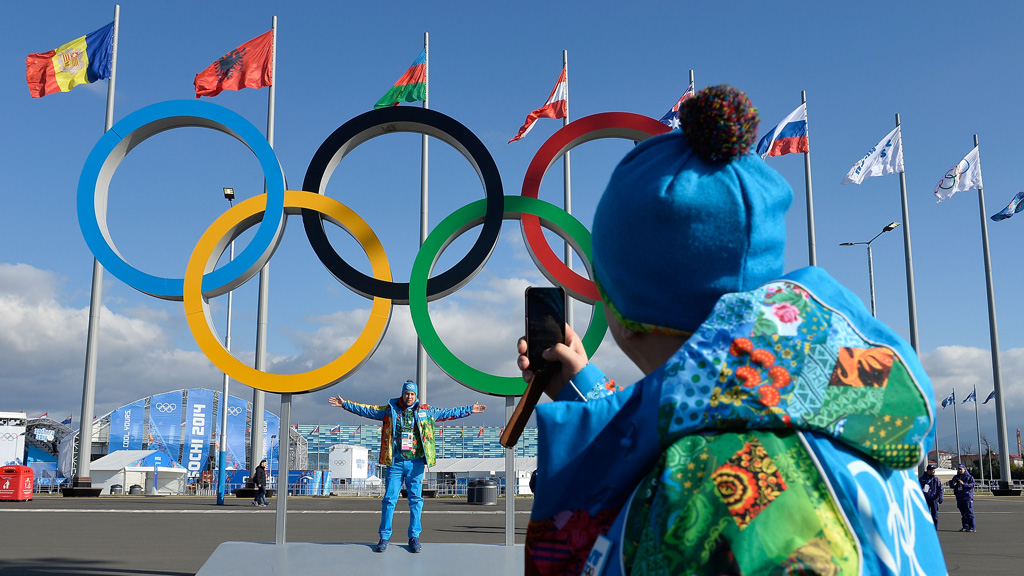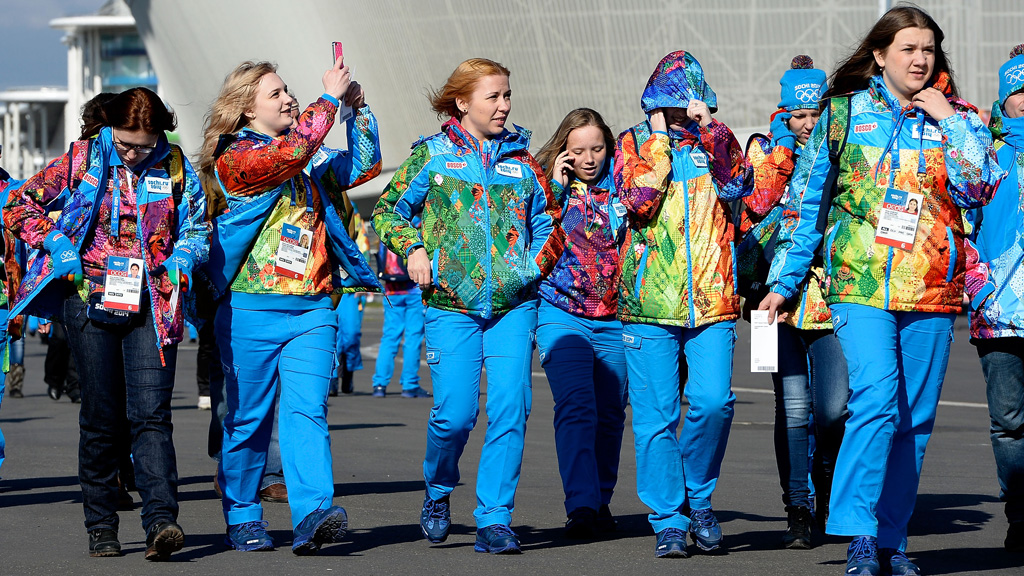Rainbow wars: what does a Russian tracksuit mean?
Volunteers at the Winter Olympics are dressed head-to-toe in rainbow colours. A tribute to Russian peasant art? Or a strategy to “drown out” pro-gay protests?

What’s pink, green, blue, yellow, orange and references peasant lacework, shawls and quilts? The Sochi volunteers’ uniforms which are “seemingly random” but “harmonious upon closer examination” according to Russian officials.
And if you think these tracksuits look a little rainbow-themed, Channel 4 News is told it is entirely coincidental that Russia‘s answer to the London Gamesmakers would make a gay pride float look like a funeral cortege.
I think it’s likely that the Russian uniforms were designed to drown out gay rights protests.
The rainbow flag is the internationally recognised symbol of gay equal rights.
“I think it’s likely that the Russian uniforms were designed to drown out gay rights protests,” said blogger Eleanor Margolis, who reckons the Russian authorities are trying to “out-gay the gays”. “That may seem like a slightly outlandish claim but we’re dealing with Putin here – the guy who equates homosexuality with paedophilia. It’s all a bit mad.”
In her New Statesman column, Margolis wrote: “Russians invented vodka and nihilism. So if they’re going to dress their Olympic volunteers up in ludicrous rainbow garb, it has to be for a damn good reason.”
‘Leave children alone’
The Winter Olympics, which officially open in Sochi on Friday, have been dominated by Russia’s hardline anti-gay policies.
The world’s media have reported on the threats, bribes and campaigns of intimidation facing same-sex couples in Russia, following the 2013 law banning the distribution of “propaganda of non-traditional sexual relationships” to minors. President Putin has told gay athletes they are welcome in Russia so long as they “leave children alone”.
Russian lawmaker Vitaly Milonov told Channel 4 News: “I think that homosexuality is one of the sins. We are not interferring with their [gay people’s] lives but it’s prohibited to address minors with this information.”
This week a schoolgirl in Russia’s Bryansk region became the first minor to be accused under the anti-gay propaganda laws.

‘Emotion and moderation’
So what is the intended meaning of these multi-coloured shell-suits? Take a deep breath, the official line is extensive.
In an email to Channel 4 News, a Sochi official wrote: “The look of the Games portrays the character and reflection of the north and south of Russia, emotion and moderation as well as tact and expression. In short, the Russian character that is inherent in every resident of the host country of the 2014 Olympic and Paralympic Winter Games. The national ornamental designs, like parts of the colourful impressions of the Sochi Games, are brought together in a patchwork quilt – seemingly random, but harmonious upon closer examination.”
The official then listed the Russian crafts which influenced the designs, put together by sports manufacturer Bosco: “Kuban patterns, Kubachi patterns, Gzhel, Khokhloma, Zhostovo painting, Palekh miniatures, Pavlov Posad shawls, Vologda lace, Yakutsk patterns, Severodvinsk painting, Mezenskaya painting, Rakulskaya painting, Uftyuzhskaya painting, Trihedral champleve enamelling and Russian print.”
It’s all a lot more complicated than Germany’s official Winter Olympics kit which is “inspired by the great atmosphere of the times” and widely seen as a pro-gay political statement.
Alistair Stewart, from the Kaleidoscope Trust, which fights for gay rights globally, said: “While you can’t draw a direct line between the choice of the Russian volunteers’ uniforms and the anti-gay laws, it’s disgraceful that at the same time people are being arrested in the streets for waving the rainbow flag.”
“But there is a certain irony in them wearing rainbow colours,” he added.
“And that, I suppose, is pleasing.”